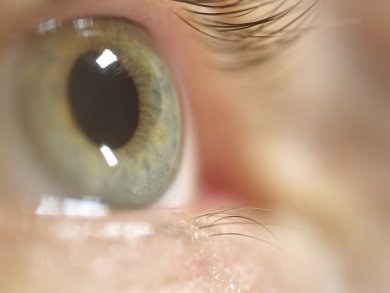The development of cataracts clouds one’s vision, while presbyopia leads to inflexibility in the lens of the eye and a reduced ability to focus. Both conditions are commonly treated by removing the intraocular lens and prescribing appropriate spectacles to allow the patient to focus.
Chemistry being developed by Commonwealth Scientific and Industrial Research Organisation (CSIRO) researchers in Australia and others could lead to an injectable polymer that can be cured within 5 min under irradiation of blue light to form an intraocular lens within the lens capsule. This could replace the damaged or diseased lens with an accommodating structure that would improve vision by allowing the patient flexibility in their eyes’ focusing power.
The team used catalytic re-equilibration of a high molecular mass polysiloxane containing phenyl groups with octamethylcyclotetrasiloxane and 2,4,6,8-tetra(n-propyl-3-methacrylate)-2,4,6,8-tetramethyl-cyclotetrasiloxane to generate their material. The consistency of the material allows them to be injected into the lens capsule. Tests in cadavers have shown how these accommodating lenses might benefit patients.
- High refractive index polysiloxane as Injectable, in situ curable accommodating intraocular lens,
Xiaojuan Hao, Justine L. Jeffery, Tam P.T. Le, Gail McFarland, Graham Johnson, Roger J. Mulder, Qian Garrett, Fabrice Manns, Derek Nankivil, Esdras Arrieta, Arthur Ho, Jean-Marie Parel, Timothy C. Hughes,
Biomater. 2012, 33(23), 5659–5671.
DOI: 10.1016/j.biomaterials.2012.04.052



